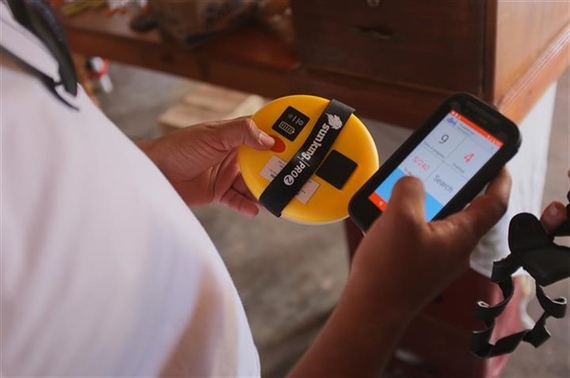By Carlos Guiza and Xosé Ramil
Carlos Guiza's passion is to find income-generating alternatives for disadvantaged people. At the Multilateral Investment Fund, he experiments with models to develop climate change resilience, and public-private alliances for corporate social innovation.
Twenty million people do not yet have access to electricity in Latin America. Around 90 million people are still dependent on solid fuels--mainly biomass and kerosene--to cover basic needs such as heating and cooking, which limits their access to lighting and contributes to greenhouse gas emissions.
This deficiency particularly affects rural areas, where two-thirds of the people have no access to electricity or gas. But there are several initiatives underway to reach the last mile in energy access.
Altruistic entrepreneurs in Latin America are working on new energy technologies, financing mechanisms, and distribution systems that are increasingly accepted in Latin America's least populated areas. The innovations include photovoltaic systems that use solar power to generate electricity, pay-as-you-go services, and mini-grid energy networks.
A recent study by the Technical University of Madrid, Sustainable Energy Distribution in Latin America, presents a clear view of these models, proposed by innovators such as Technosol in Nicaragua, Iluméxico and Acciona in México, Endev in Peru, Energética and Phocos in Bolivia, and Guascor in Brazil.
All of these entrepreneurs have successfully developed their ideas to overcome the challenges of providing clean energy services in rural areas and still generating income--not only for themselves, but also for people in the surrounding areas who benefit by working as distributors and maintenance technicians for the new technologies.
As of the end of 2015, the energy entrepreneurs had strong results:
- Energizing Development (EnDev) in Peru had fostered an ecosystem of around 20 entrepreneurs who sell improved cookstoves. Some of these entrepreneurs make at least twice the minimum salary in their area and employ as many as 20 salespeople each.
- ACCIONA Microenergia Mexico had installed 3,602 solar-power systems in villages with fewer than 100 inhabitants, and expects to have 7,500 systems installed by the end of this year.
- Ilumexico in Mexico had trained 43 community engineers how to maintain solar-power systems in rural areas, and given them the opportunity to sell parts as a way to generate additional income. The company had sold systems to 5,600 rural households.
- Energética in Bolivia had partnered with municipalities to host local fairs that built public awareness of and trust in solar power. In the meantime, Energética developed its distribution networks for solar-power systems--salespeople that go door to door in rural areas.
Governments in Latin America and international donors are providing the energy entrepreneurs with positive incentives. For example, Nicaragua is granting tax exemptions for imported solar panels, and Peru is giving the entrepreneurs concessions to develop electricity sources in off-grid areas. Endev in Peru is fully funded by donors, with six countries providing money: Germany, the Netherlands, Norway, the United Kingdom, Sweden and Switzerland.
While energy entrepreneurs in Latin America are concentrating their efforts on the challenge of reaching the last mile, in time, the region's cities may become an attractive market for their innovations.
Since 80 percent of the region's population is concentrated in cities, and city residents are connected to large electricity grids, urban energy innovations will require changes in public policies to encourage alternative energy suppliers to enter these markets. In the long term, innovations must take into account the need for climate change resilience in cities.
Hydroelectric power is the current major source of electricity in Latin America and the Caribbean. But with recent scenarios forecasting growth of at least 28 percent in demand for electricity between now and 2040, there will be ample room for alternative energy sources, such as solar.
Furthermore, there is opportunity in the market for residential energy: since 1971, residential energy consumption in Latin America and the Caribbean has not only grown at a higher rate than income, but also at a higher rate than energy consumption by other sectors.
The most lucrative route for energy entrepreneurs may turn out to be creating innovative models that are resilient to the effects of climate change in both rural areas and cities.
Is it too complicated to dream about mini-grid energy networks for neighborhoods as an alternative when traditional on-the-grid systems fail?
Xosé Ramil
Xosé Ramil is head of communications at the Innovation and Technology for Development Centre at the Technical University of Madrid. His areas of expertise include digital communication, crowdfunding, and information and communications technology tools to stimulate social engagement.
From the Multilateral Investment Fund Trends blog

